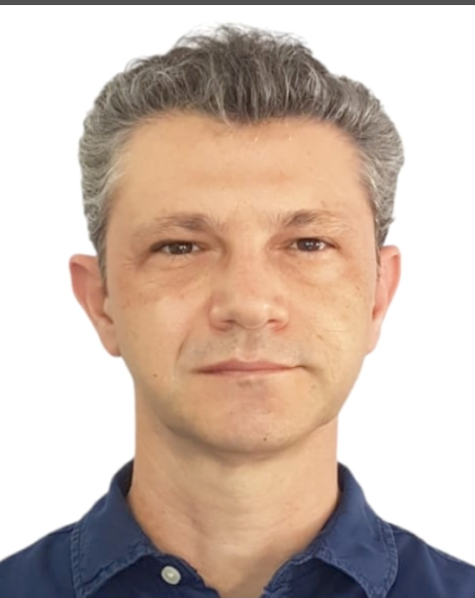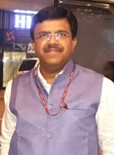Speakers 2024
Keynote Speaker Ⅰ

Prof. Enedir Ghisi
Federal University of Santa Catarina, Brazil
Biography Sketch: Prof. Enedir Ghisi obtained his PhD in Civil Engineering from the University of Leeds, in the UK, in 2002. He is currently a professor in the Department of Civil Engineering at the Federal University of Santa Catarina, located in Florianópolis, southern Brazil. So far, he has edited 10 books, published 14 book chapters, 183 conference articles and 170 journal articles. He has concluded the supervision of 14 PhD and 40 master's students. Currently, he supervises 12 PhD and 3 master's students. His research topics are thermal performance of buildings, energy efficiency in buildings, lighting, sustainability, building simulation, life cycle assessment, water consumption and rainwater harvesting in buildings. In studies carried out at Stanford University, in 2023 (DOI 10.17632/btchxktzyw.6), 2022 (DOI 10.17632/btchxktzyw.4), 2021 (DOI 10.17632/btchxktzyw.3) and also in 2020 (https://doi.org/10.1371/journal.pbio.3000918) Prof. Enedir Ghisi was recognised as one of the 100,000 most influential scientists in the world for the whole career and also for 2022, 2021, 2020 and 2019.
Speech Title: The potential for electricity savings by reducing potable water consumption on a city scale
Abstract: The water sector is a major consumer of energy in the world. Energy is required for water withdrawal, for its treatment and distribution to population and for wastewater treatment. Therefore, the conservation of such resources is closely related. The objective of the speech is to discuss and present the potential for electricity savings in municipal water supply and sewage systems, resulting from the reduction of potable water consumption in residential, public and commercial buildings on a city scale. Four strategies were considered to promote potable water savings: replacement of conventional toilets with dual-flush ones, greywater reuse, rainwater harvesting and the simultaneous adoption of these three strategies. For all these scenarios, minimum and maximum water savings were determined for each type of building; the corresponding reduction of sewage production was also estimated. Minimum and maximum potential for electricity savings in water supply and sewage systems were estimated. The financial impact of such actions for the water and sewage utility was also assessed.
Invited Speaker I

Prof. Maddalena Buffoli
Polytechnic University of Milan, Italy
Biography Sketch: Associate Professor in the field of Hygiene and Public Health – MED/42 for the courses of "Urban Health", "Environmental Hygiene" and "Technologies for Building and Environmental Hygiene" for the School of Architecture, urban planning, construction engineering (AUIC) of Politecnico di Milano. Architect and PhD in "Planning, Maintenance, Redevelopment of building and urban systems".
Lecturer at the "City and Health" course of the School of Specialization in Hygiene and Preventive Medicine at University of Milan, at the "Research, design and health. strategies and methodologies to improve health promotion and disease prevention in contemporary built environment" course at the PhD School of Dept. ABC of Politecnico di Milano and at several post-graduated masters and courses, such as the Post-graduate Master of II level in "Planning, programming and design of hospital and socio-sanitary systems" of Politecnico di Milano, University of Milan, and Catholic University of the "Sacred Heart" in Rome.
Member of the Design&Health Lab. of Dept. ABC of Politecnico di Milano, the strategic research working group "Complex Construction" of Politecnico di Milano, as well as Lombard Academy of Public Health, the "Building Hygiene" research group of the Italian Society of Hygiene (SItI) and the "Urban Health" working group of European Public Health Association (EUPHA).
Currently Member of: the PhD Committee of Dept. ABC; the Scientific Commission of the Dept. ABC; the Admission Commission to the Master's Degree Course in "Architecture-Architecture Built Environment Interiors" and the Commission for the Cyclical Review of the Degree Course in "Architectural Design" of the School of Architecture, urban planning, construction engineering (AUIC) of Politecnico di Milano.
Since 2000 participant to numerous research, consultancy and feasibility studies of Politecnico di Milano concerning Health and Environmental Sustainability at the building and urban scales with particular reference to the planning and design of architectures for health. Regarding these issues, author of over 200 articles in specialized journals and speaker in numerous national and international conferences.
Speech Title: Built Environment and Health Impacts: The Role of the Design to Promote Public Health
Abstract: Public health (understood as a complete state of physical, social and psychological well-being) is closely connected to the natural and built environment in which we live.
Planning and management actions in the urban and built contexts provide several opportunities for the protection and promotion of Public Health. Indeed, health conditions depend especially on environmental, economic and social factors, which are influenced by a correct design and management of the living environment.
This presentation will illustrate, through case studies and research conducted by the Design&health Lab of the ABC Department, the aspects and evidence-based strategies that have the greatest impact on Health.
Invited Speaker II

Prof. Alessandra Zanelli
Polytechnic University of Milan, Italy
Biography Sketch: Prof. Alessandra Zanelli is a member of SPACE (Experimental process for architecture and life cycle of building products) Research Unit at the same Department. Her main interests deal with role of technological innovation in architecture and in industrial design. In particular, she has focused her attention on: temporary systems (tents, minimal units for emergency; mobile homes, ect.); adaptive systems (smart, extensible, foldable, pivots systems, ect); application of lightweight systems and demountable buildings for dwellings. Alessandra is a professor of building technology in the degree courses in Architecture, Environmental Architecture and Building Construction at the Faculty of Architecture and Society and at the Faculty of Civil Architecture, both of the Politecnico di Milan.
Since 2001 she is Teaching Organiser of Doctorate in Technology and Design Engineering for Building and City Environmental Quality of the BEST Department and since march 2005 she is Member of the Scientific Committee of the same Doctorate. She collaborates with the reviews Arketipo, Costruzioni Metalliche, Costruire in laterizio, Frames, Tenda, Tensinews. She is Associate Member of Management Board of TensiNet Association, the thematic network for upgrading the built environment in Europe through tensile structures and since 2004 she is the Regional Representative for Italian Universities.
She is the coordinator of a Multidisciplinary Research Cluster entitled “Innovative Textiles”, in order to connect different competences of Structural Engineering, Mechanical Engineering, Nautical and Internal Design, Chemical and Material Sciences and finally Building Technology and Environmental Design already available inside of various Departments at the Politecnico di Milano. The aim of this action is to promote an integrated approach for designing with textile materials and lightweight structures and become visible as complete team of work, able to propose innovative techniques for designing, manufacturing, building up and testing all kind of membrane, textile and flexible foil.
Speech Title: TBD
Invited Speaker III

Dr. Febi Varghese
DIRECTOR&CEO,KERALA STATE NIRMITHI KENDRA,GOV.OF KERALA,INDIA
Biography Sketch: Dr. Febi Varghese is a Post Graduate in Engineering (M.Tech-First Rank) and took his Ph.D from the prestigious Mahatma Gandhi University. Having more than 30 years of professional experience, Dr.Febi has worked as the Director of Coir Board of India and as the Chairman & Managing Director of Travancore Cements Ltd., Managing Director of Kerala Minerals and Metals Ltd. ,Kerala State Industrial Enterprises Ltd., Kerala State Coir Corporation Ltd., KERAFED , Kerala State Coconut Development Corporation Ltd., etc. and also worked as the Financial Analyst of United Nations . Dr. Febi Varghese has been a regular Speaker to International Conferences held in Japan, Korea, Malaysia, Hong Kong, etc. He is a Fellow of both Institution of Engineers (India) and Indian Institute of Technical Arbitrators and recipient of Management Excellence Award. Dr. Febi has umpteen number of published Papers and Books and Patented Product to his credit.
Speech Title: 3D PRINTING BUILDING TECHNOLOGY- The Game Changing Future Technology
Abstract: TBD
Invited Speaker IV

Prof. Paulo Mendonca
University of Minho (EAAD), Portugal
Biography Sketch: Associate Professor of the Architecture School of the University of Minho (EAUM). Coordinator of the Design and Technology Research Group (2015-2018), Dean of EAUM (2011-2012) and Vice-Dean of EAUM (2010-2011). Integrated Master Studies Director (2007-2009), Architecture Graduation Director (2005-2006).
PhD in Civil Engineering by the University of Minho, with the thesis: “Living under a second skin”, acclaimed by unanimity (2005). As a PhD fellowship of FCT (Portuguese Foundation for Science and Technology) he got the “Advanced Studies Diploma” in Barcelona on the Technical Superior School of Architecture (ETSAB). He was a JNICT (former designation of FCT) fellowship student in the Textile Engineer Department of the University of Minho, where he obtained the Master Degree in Design and Marketing with a thesis about “Smart Textiles in Architecture” (1997). Graduated in Architecture by the University of Porto, Portugal (1994). He was Erasmus granted student in ETSAB, Barcelona (1993-1994).
Speech Title: Circular Economy in Lightweight Structures – Report on a Test Cell Design
Abstract: Membranes can be a good environmental and economically viable solution. The reuse of maritime containers as building structures can also be interesting for the same reasons. Both systems present some functional problems in temperate climates, due to the fact that these are lightweight and thin, so they lack on thermal mass and acoustic insulation, that need to be evaluated under real life conditions. Some previous studies where the first author was involved were already developed and proved that membrane structures can easily adjust to the specific micro climatic conditions of temperate climates [1]. What is proposed in this research is to combine containers with membranes in order to achieve better mechanical and functional performance. This communication presents a test cell design using membranes as exterior coating and maritime containers with three compartments, two facing south to be used as test cells and one, larger, to be used as a research lab on the north side. The east and west facades are covered with PVC coated polyester as well as the roof, such in a previous test cell facility designed by the first author and built in the same location that was used for several tests from 2010 till 2015 [2, 3]. Some solar passive techniques used in this building are reflected on the north façade which consists on a pneumatic translucent membrane and a ventilated roof with an anticlastic shape membrane. The purpose of this building is to be used as test cell to perform qualitative and quantitative analysis of variable panel designs to be used as insulation and thermal mass in the interior coatings. These panels will be made of different composite materials to be tested on its thermal and acoustic performance, such as in previous studies from the first author [1, 4, 5]. The results of this research help in devising and studying the methodologies to promote a circular economy in construction sector.